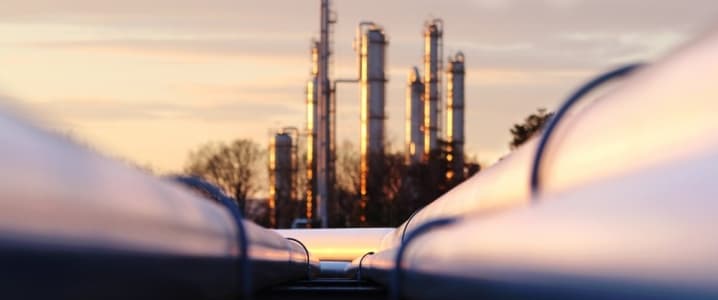An oil and gas building spree in the United States might have a serious boomerang effect that could hit the industry as hard as a changing fundamentals landscape hit the coal industry in the 2010s, a report from Global Energy Monitor has warned.
According to the report, there is US$232.5 billion worth of new oil and gas pipelines being planned and built right now in North America, with most of this in the United States. This expansion, however, does not rely on an increase in domestic demand for oil and gas. It relies almost exclusively on demand growth in Asia, much like the coal expansion in the 2010s. That, however, went awry, decimating the coal industry.
The factors that could ruin the pipeline expansion in the United States include demand patterns in that key Asian market everyone is targeting as well as changing attitudes—and legislation—concerning climate change and the oil and gas industry.
Asia, and particularly China and India, the continent’s largest economies, have become the top target market for all commodity industries, but the Asian markets are particularly important for the energy industry. Demand for fossil fuels in Europe, for example, is falling steadily under the pressure of climate change-related legislation and changing climate attitudes.
Even in the United States, the EIA has projected a slowdown in oil and gas demand growth, which, according to Global Energy Monitor, means the domestic market would not be able to take all the additional oil and gas coming in from the shale plays that are driving the overall growth in fossil fuel production. In China and India, conversely, energy demand, including oil and gas demand, is on the rise. For now.
Referring to a term coined by John Maynard Keynes—“animal spirits”—the report explains the ambitious expansion plans of energy companies in the U.S. with a misleading sense of optimism that the current supply and demand dynamics will continue. In other words, pipeline builders falsely believe Asian markets will continue to be as thirsty for U.S. oil and gas—especially gas—as they are now. This, according to Global Energy Monitor, is not the case.
Natural gas supply from the Middle East, for one, is on the rise and this rise will hit 65 percent between 2017 and 2040, according to the IEA. What’s more, China’s own domestic production of natural gas is set for a jump of 142 percent by 2040. A strong increase in gas production is expected in Africa and South America as well, with the global total rise at 46 percent, versus 36 percent in the United States. In other words, the U.S. is by far not the only place where gas production is on the rise, which means a lot more intense competition in the coming decades.
Then there is the climate change factor that is increasingly likely to begin pressuring demand for oil and gas in all markets. As one of the authors of the report put it in an interview with Engineering and Technology, “The IPCC has made it clear that emissions in the oil and gas sector need to level out quickly and significantly decline in the next decade. That is incompatible with investments in more oil and gas infrastructure.” Related: Shocking Evidence Suggests Much Faster Global Warming
While it remains doubtful how successful governments’ efforts in the emission-cutting respect will be, the fact remains that such efforts are being made, including in that most desirable of all Asian market where reducing oil and gas consumption is not just a question of emissions reduction, but of reducing the energy import bill.
It seems the risk comes from the belief that the status quo will continue indefinitely. This, however, is not the case and investors should think twice before taking part in new pipeline construction, Ted Nace, executive director of Global Energy Monitor said.
“The oil and gas industry is shaped by the familiar patterns of the boom/bust cycles that characterise extraction,” he told Engineering and Technology. “It’s easy to shift drilling rigs in and out of deployment. But midstream infrastructure is fundamentally different. Investments are for 40 to 50 years. The industry does not seem to realise how quickly the landscape is shifting as costs for renewables and storage fall very rapidly.”
ADVERTISEMENT
By Irina Slav for Oilprice.com
More Top Reads From Oilprice.com:
- Trump’s Offshore Drilling Boom May Not Happen Before 2020
- ‘’The Fat Margins Have Disappeared’’ - Big Oil Disappoints
- Big Oil’s Biggest Weapon In The Permian


















